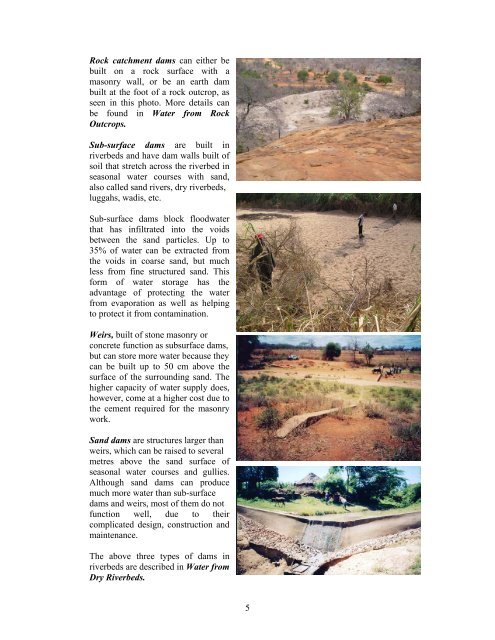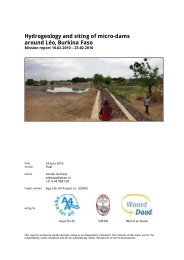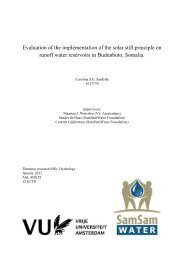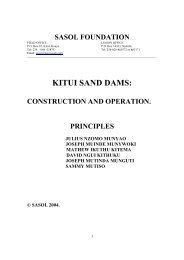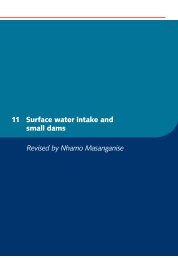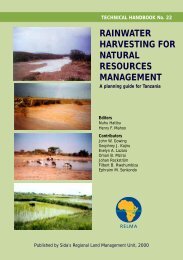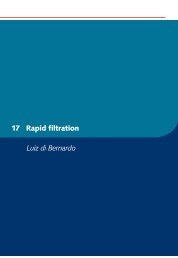Water from Small Dams
Water from Small Dams - SamSamWater
Water from Small Dams - SamSamWater
You also want an ePaper? Increase the reach of your titles
YUMPU automatically turns print PDFs into web optimized ePapers that Google loves.
Rock catchment dams can either bebuilt on a rock surface with amasonry wall, or be an earth dambuilt at the foot of a rock outcrop, asseen in this photo. More details canbe found in <strong>Water</strong> <strong>from</strong> RockOutcrops.Sub-surface dams are built inriverbeds and have dam walls built ofsoil that stretch across the riverbed inseasonal water courses with sand,also called sand rivers, dry riverbeds,luggahs, wadis, etc.Sub-surface dams block floodwaterthat has infiltrated into the voidsbetween the sand particles. Up to35% of water can be extracted <strong>from</strong>the voids in coarse sand, but muchless <strong>from</strong> fine structured sand. Thisform of water storage has theadvantage of protecting the water<strong>from</strong> evaporation as well as helpingto protect it <strong>from</strong> contamination.Weirs, built of stone masonry orconcrete function as subsurface dams,but can store more water because theycan be built up to 50 cm above thesurface of the surrounding sand. Thehigher capacity of water supply does,however, come at a higher cost due tothe cement required for the masonrywork.Sand dams are structures larger thanweirs, which can be raised to severalmetres above the sand surface ofseasonal water courses and gullies.Although sand dams can producemuch more water than sub-surfacedams and weirs, most of them do notfunction well, due to theircomplicated design, construction andmaintenance.The above three types of dams inriverbeds are described in <strong>Water</strong> <strong>from</strong>Dry Riverbeds.5


